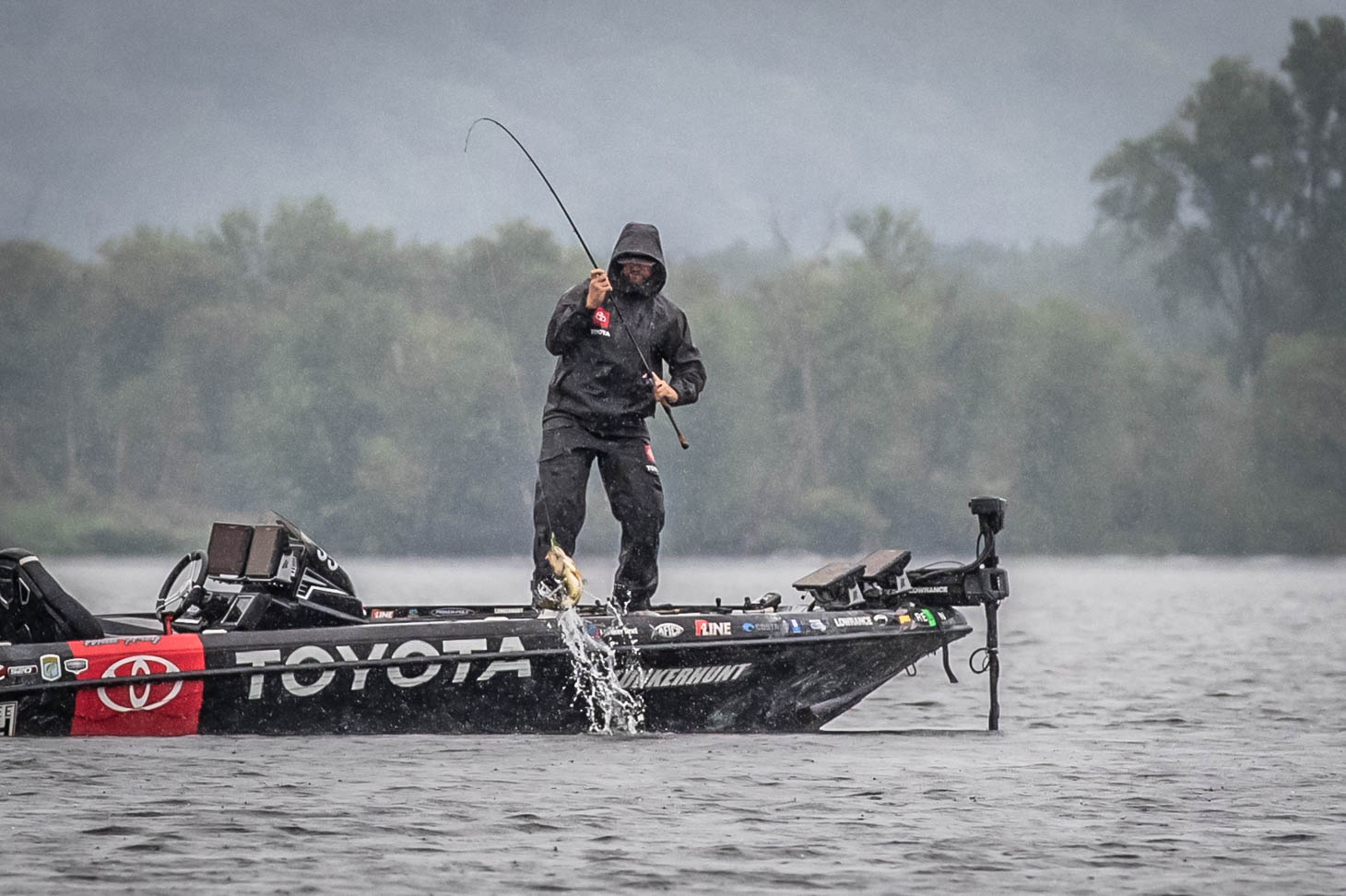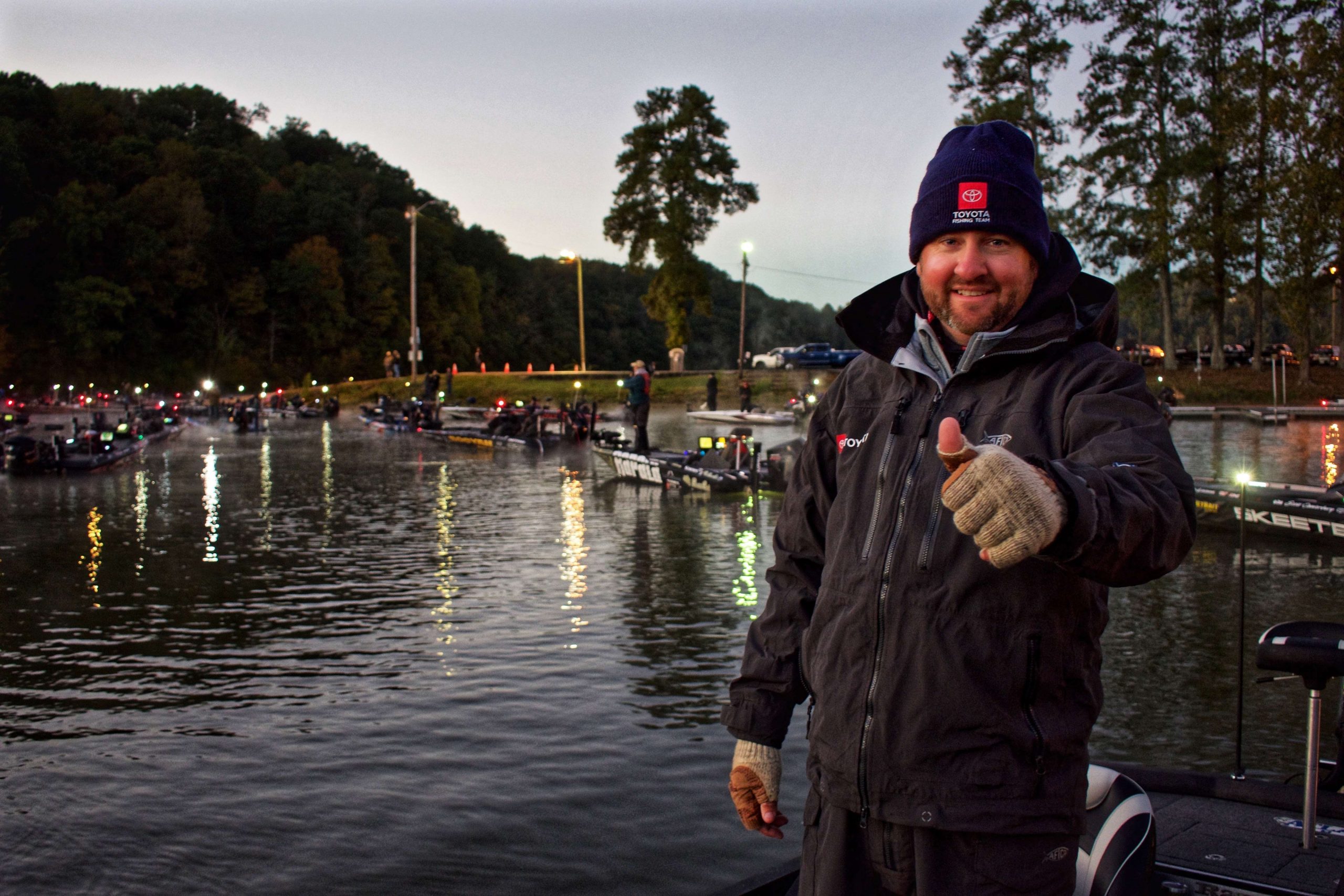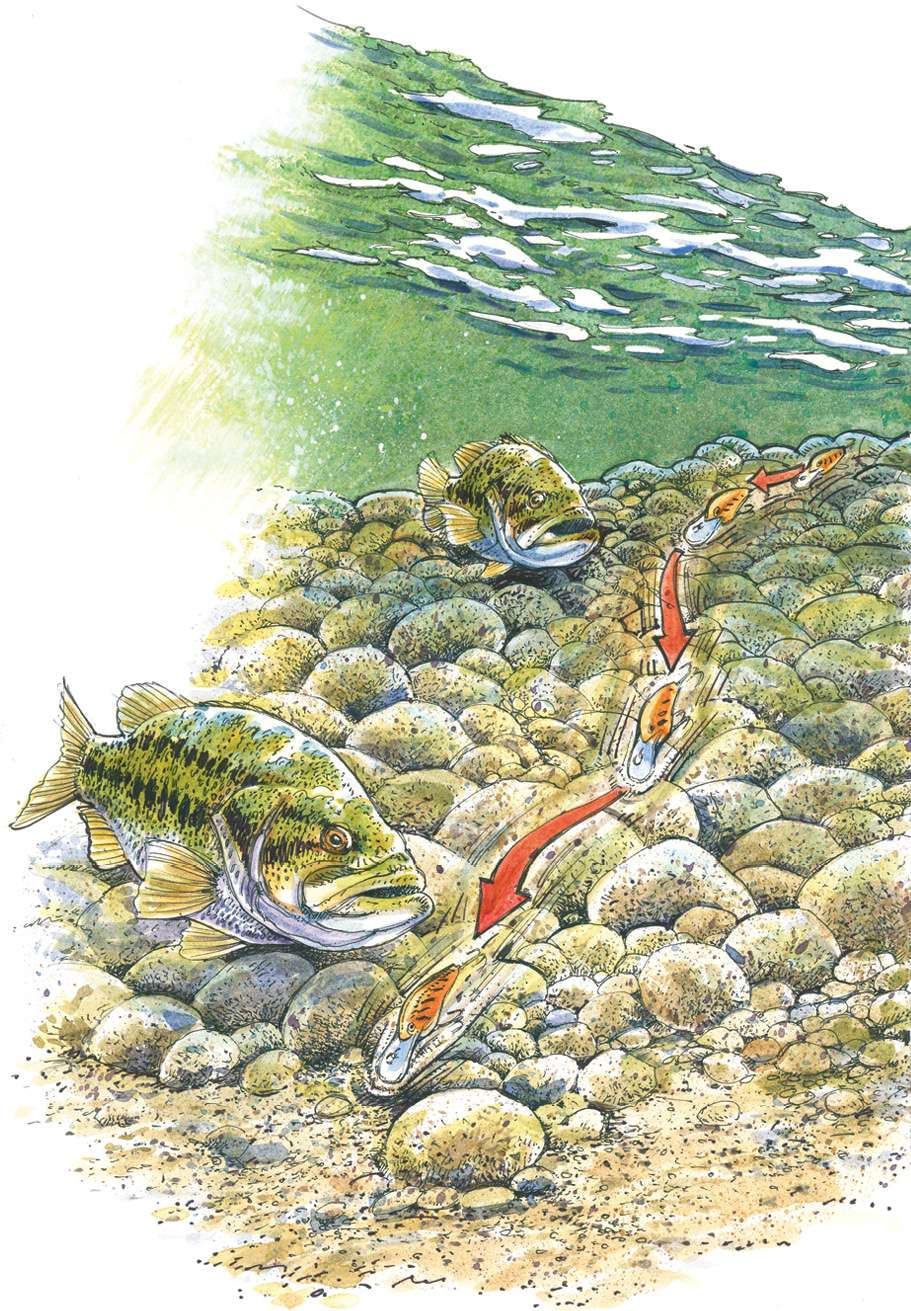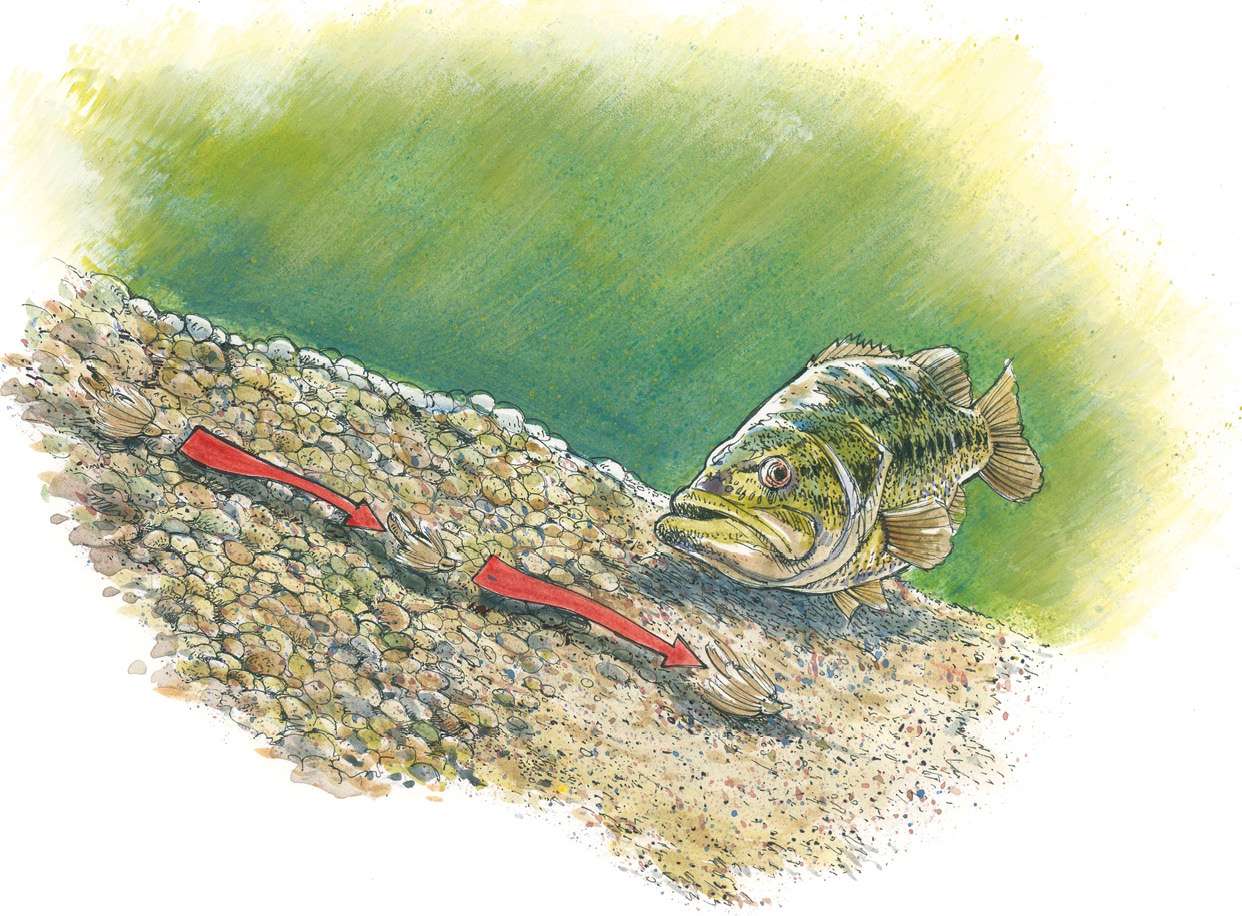
Bass fisherman have fished them for years on different types of lakes around the country. They attract and hold largemouth, smallmouth and spotted bass at all times of the year. Tournaments at every level have been won on them, including the Bassmaster Classic. Best of all, they’re especially productive during the cold winter months when bass may gang up on them in fairly shallow water.
In case you’re wondering what these seemingly magical places are, they are transition zones — places where two different types of structure or cover meet. The most easily recognized transition zones are visible along shorelines where rocks may change to gravel, or gravel to vegetation, and which continue underwater. Depth changes are transition zones, as are lone boat docks (that’s why the first dock entering a cove is often the best) and even the edges of weedlines where they meet open water.
Areas where two different types of vegetation meet, as they frequently do on Lake Okeechobee, can be considered transition zones, as can any place fast-moving water hits an object and creates an eddy of still water. On Lake Guntersville, the mussel shellbeds are excellent transition zones in that they offer a hard bottom surrounded by hydrilla and milfoil; they’re so dependable, fishermen search specifically for them, even though dozens of other fishing options are available on the famous lake.

“Late-winter fishing can really be tough,” admits Bassmaster Elite Series pro Matt Arey, “but there are places bass do seem to prefer, and transition zones are some of the best and most reliable areas I’ve found through the years. What I personally prefer are changes in the composition of the bottom, which may or may not be a continuation of what I can see along the shoreline. My favorites are where clay changes to sand and where steep, 45-degree chunk-rock banks transition into flatter slopes and smaller rocks.
“I think transition zones offer bass not only a different type of cover and ambush point, but they also attract different types of forage,” continues the North Carolina pro. “Some of these zones, especially where vegetation meets rocks, may also provide a temperature change. I know rocks and gravel attract a lot of crawfish during the cold weather because the bass I catch usually spit them out in my livewell.”
Transition zones are not uncommon, by any means. In fact, all bass lakes have them, but some, says Arey, have a lot of them. Table Rock, Beaver, Bull Shoals, Tellico/Ft. Loudon, Chickamauga, Pickwick, Lanier and Norman are a few of the better-known impoundments where transition zones are common.
“I study different lake maps before I arrive at a lake, so I’ll know exactly where I want to fish,” he says. “If I can find what I call ‘swing banks,’ where a channel comes in close to the shoreline, I’ll definitely mark it on my map. This is a case where you’re looking at a depth change being the primary transition zone, but frequently it will also be where the bottom composition changes, and even where cover changes. Anytime you can combine more than one type of change in the same area, the better that place will be.”
Arey believes most lakes have two types of bass: those that live in the main body of the lake, and a different population that lives in tributaries. Both use transition zones during the winter months, which often leads him to begin his fishing in a tributary. The reason is that smaller tributaries are easier and faster to fish — he terms this “finding high-percentage areas” — and if he does determine a pattern exists, he’ll then try to expand it into the main lake. Through years of fishing transition areas, Arey has recognized that in the creeks, the fish also tend to be closer to the mouth than further back where the water is usually more shallow.

What makes Arey’s approach so attractive is that his target depth rarely, if ever, exceeds 10 feet, and, in fact, the majority of his strikes actually come in just 6 to 8 feet. Even if he’s working a channel swing where his boat may be over much, much deeper water, he’s still casting and concentrating on that shallow depth range.
“That’s why I use jigs and crankbaits,” he explains. “It’s critical to not only retrieve slowly but also to keep your lures on or in close contact with the bottom, and I can do that with jigs and crankbaits. I’m imitating crawfish and shad, which is why the bass are shallow, but the strike zone is small.”
Arey’s crankbait is often a No. 6 Shad Rap, but he also uses Wiggle Warts and others that cover the 5- to 10-foot range effectively. He uses a variety of orange and red crawfish patterns and 12-pound P-Line fluorocarbon matched with a Lew’s 7-foot medium action Custom Pro Rod and a TLCP 6.8:1 reel. The key is his retrieve, which is slow but steady, right along the bottom. The colder the water, the slower his retrieve.
“A crankbait works best on the steeper chunk-rock banks that flatten out because I just crawl the lure around and through the rocks like a crawfish usually moves,” Arey notes. “I don’t do anything special on the retrieve, like changing speeds or jerking my rod, because crawfish in cold water don’t do that. Even with a slow retrieve like I’m using, I can still cover a lot of water, especially when I start in a larger tributary like I usually do.
“What I do like, particularly in clear water, is a little wind that ripples the surface, because it will actually help move bass a little more shallow. I’ll fish dingy water, too, but not muddy water, and under those conditions, wind is not important, since the fish are usually shallow anyway.”
When the transition zone is smoother, such as from smaller gravel to sand or clay, Arey often changes to his jig, a 1/2-ounce Arkie-style casting model. It’s usually brown or green pumpkin, and his trailer (same color) will have claws or pincers but not a lot of action. He’s not getting strikes as the lure falls, nor is he hopping the bait violently on the bottom, so he doesn’t need an aggressive trailer. He just wants something that adds some bulk to the jig and also helps create a slight water movement as he crawls the lure along the bottom.
“My retrieve is really just a slow drag with pauses,” says Arey. “Sometimes, if I’m working across a flat gravel or sandy area, I may barely hop the jig once or twice just to change the vibration pattern, but I want everything to appear as natural as possible. The only time I do change the cadence of my jig is when we have a few days of warmer temperatures and the bass seem a little more active. Then I’ll move it a little faster, but not a lot.”

The Elite pro uses a completely different setup for jig fishing, a Lew’s 7-foot, 4-inch medium action rod with a fast TLCP 8.3:1 reel. His philosophy is that it’s easier to slow down a high-speed reel than to speed up a slow reel. He spools with slightly heavier 15-pound P-Line fluorocarbon, too, because the jig seems to produce slightly heavier fish.
“When I’m fishing under cold but bright, clear skies, I’ll definitely start my fishing with the jig,” continues Arey. “For me, it’s also an easier lure to use when the depth change of a channel swing is a major part of the transition. I can work it into deeper water if I think I need to, but the majority of the time my primary target zone is 10 feet or less.”
Arey has fished transition-zone patterns like this for years, and because it can work from late autumn to the earliest hints of spring, it’s a pattern he looks for practically anywhere he fishes. Prior to joining the Elites for the 2019 season, he spent a decade fishing the FLW Tour and won an event on Beaver Lake using a transition-zone pattern.
“When you’re fishing transition zones in the coldest part of winter, you have to keep an open mind,” he says. “You know the fish are going to be somewhere on some type of transition, so you just have to keep fishing until you do find the right one. When you find the right one, however, you can easily catch a lot more of them without moving your boat.
“Then, you should be able to expand your area, even moving from a tributary creek into the main lake, or vice versa if you want to, because bass often will be on the same type of transition. If you’re going to be on the same lake several days in succession, you can often catch bass off the same transition each day, too, which is how I won that event on Table Rock.”
“The pattern can be that good and that reliable.”
Originally published in Bassmaster Magazine 2020.




